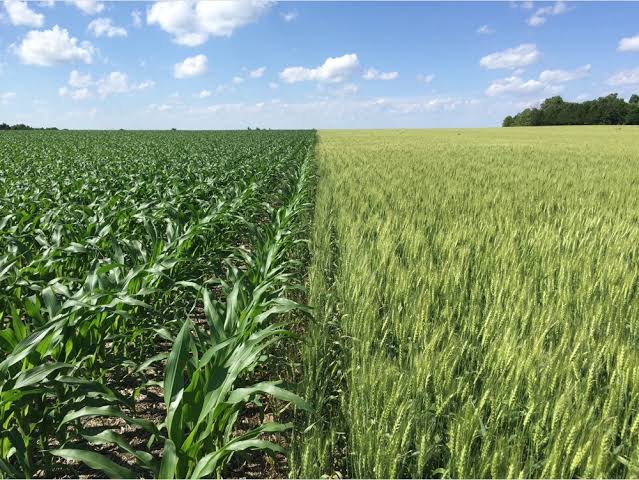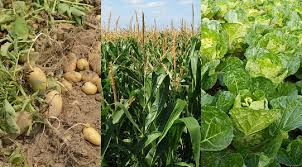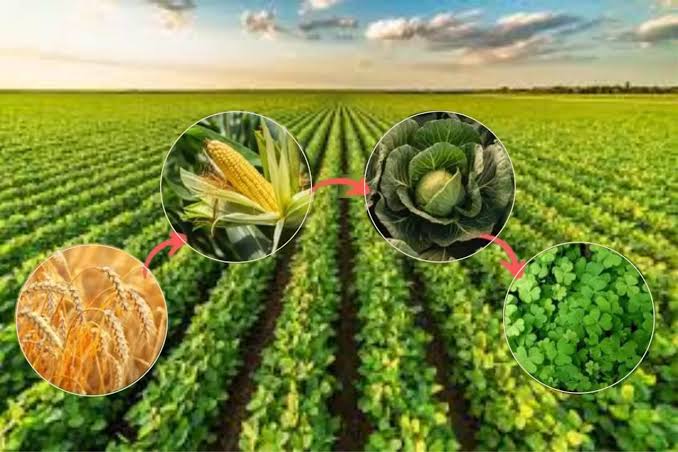Practicing Crop Rotation involves changing the types of crops grown in a specific area over time. This agricultural technique helps maintain soil health and improve overall crop yield. When farmers practice crop rotation, they plant different crops in the same field in successive seasons.
This method has been used for centuries and is based on the idea that different plants have different nutrient needs. Growing the same crop in the same place year after year can deplete the soil of specific nutrients, leading to poor harvests. Crop rotation helps address this issue by alternating crops to balance nutrient usage.
One significant benefit of practicing crop rotation is the reduction of pests and diseases. Some crops attract specific pests or diseases, and when they are planted in the same location repeatedly, these issues can become more severe. By changing the crops, farmers disrupt the life cycles of pests and pathogens, leading to a healthier overall environment for plant growth.
Moreover, crop rotation contributes to weed control. Different crops have varying heights, growth patterns, and root structures, which can help suppress weed growth. This natural form of weed management reduces the need for excessive herbicides and promotes a more sustainable and environmentally friendly farming approach.
Additionally, practicing crop rotation enhances soil structure. Different crops affect the soil in diverse ways, and rotating them helps maintain soil fertility and structure. For example, legumes, such as beans and peas, have nitrogen-fixing bacteria in their roots, which enrich the soil with nitrogen, an essential nutrient for plant growth.
The practice of crop rotation is also known to improve water retention in the soil. Different crops have different root systems, and alternating them helps create a more complex and robust soil structure. This structure allows the soil to retain water more effectively, reducing the need for excessive irrigation.
In addition, practicing crop rotation is a sustainable and effective farming method that benefits both the environment and crop yield. By diversifying the types of crops grown in a specific area, farmers can maintain soil health, reduce the risk of pests and diseases, control weeds naturally, and improve overall agricultural productivity.
This age-old technique continues to play a crucial role in modern farming practices, promoting a balanced and resilient approach to food production.
Read Also: Predators, Parasites and Diseases of Snail and Controls
How to Practice Crop Rotation

Crop rotation is a smart way to keep your plants healthy and your soil fertile. It’s like giving your garden a well-deserved vacation. Here’s a simple guide on how to practice crop rotation in your backyard:
1. Know Your Crops: Understand the different types of crops you want to grow. Group them into categories like leafy greens, root vegetables, and legumes.
2. Plan Your Garden: Divide your garden into sections based on the crop categories. This helps you keep track of where each group has been planted.
3. Follow the Order: Stick to a planned order for planting. For example, if you grew legumes in one section last season, plant leafy greens there this time.
4. Break the Pest Cycle: Pests and diseases often attack specific crops. Rotating crops helps break this cycle, as pests and diseases won’t find their favorite snacks in the same spot each year.
5. Boost Soil Health: Different crops have different nutrient needs. By rotating, you give the soil a chance to recover and replenish specific nutrients, reducing the risk of soil depletion.
6. Legumes for Nitrogen: Legumes like peas and beans have a superpower – they can capture nitrogen from the air and store it in the soil. Use them in one section to naturally enrich the soil.
7. Avoid Plant-Specific Problems: Some plants release substances that can harm their own kind. By changing their location each season, you avoid the risk of these plants suffering from issues caused by their own residues.
8. Plan for Success: Consider the growth habits of your crops. Tall plants may shade shorter ones, affecting their growth. Plan accordingly to make sure each plant gets the right amount of sunlight.
9. Keep Records: Maintain a simple record of what you planted in each section and when. This makes future planning easier and helps you avoid accidentally planting the same crop in the same place.
10. Be Flexible: Sometimes weather or unexpected events can alter your plans. Stay flexible and adapt your crop rotation strategy as needed.
However, crop rotation is like a dance for your plants, changing partners each season to keep things lively and healthy. By following these simple steps, you’ll be on your way to a flourishing garden with happy, rotated crops.
Read Also: Basic Snail Farming Tools and Equipment
Advantages of Practicing Crop Rotation

Crop rotation offers various advantages for both plants and the soil:
1. Disease Control: Rotating crops helps break the life cycle of pests and diseases. Many plant-specific pests and pathogens rely on consistent host plants, and by changing the location of crops, you disrupt their breeding and survival.
2. Nutrient Management: Different crops have distinct nutrient requirements. Crop rotation allows for a more balanced use of soil nutrients, preventing the depletion of specific elements. This promotes healthier plant growth and higher yields.
3. Soil Fertility Improvement: Certain crops, such as legumes, have the ability to fix nitrogen from the air and enhance soil fertility. Including these nitrogen-fixing plants in the rotation contributes to a more nutrient-rich soil.
4. Weed Suppression: Crop rotation can help manage weeds. By changing the types of crops in a specific area, you disrupt weed growth cycles, making it more challenging for weeds to establish and spread.
5. Reduced Soil Erosion: Different crops have varying root structures, and rotating them helps maintain soil structure. This, in turn, reduces soil erosion, as the roots of different crops help bind the soil together.
6. Improved Water Efficiency: Crop rotation can enhance water use efficiency. Some crops may have deeper or shallower root systems, allowing for better utilization of water resources in the soil.
7. Increased Biodiversity: Growing a variety of crops promotes biodiversity in the garden or field. This diversity attracts a range of beneficial insects and microorganisms that contribute to a healthier ecosystem.
8. Enhanced Soil Structure: Crop rotation helps in maintaining and improving soil structure. Different plants have different root structures, contributing to the overall health and structure of the soil.
9. Balanced Pest Management: Changing the location of crops disrupts the habitat of specific pests, reducing the likelihood of pest infestations. This can minimize the need for chemical pesticides and promote more sustainable pest management practices.
10. Sustainable Agriculture: Crop rotation is a fundamental practice in sustainable agriculture. It promotes long-term soil health and reduces the dependence on synthetic fertilizers and pesticides, contributing to more environmentally friendly farming methods.
In summary, practicing crop rotation is a holistic approach to agriculture, offering a range of benefits that contribute to healthier plants, fertile soil, and sustainable farming practices.
Read Also: Your Complete Guide to Effortless Food and Drink Pairing

